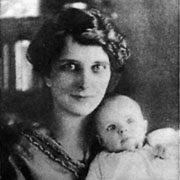Guide to U.S. Mercury Dimes
The Mercury Dime, or Winged Liberty Head Dime, was introduced in 1916 and struck until 1945. The common name for the series comes from its mistaken association with the Roman messenger god Mercury, who is often depicted wearing winged shoes or a winged hat. The obverse design of the coin actually features an image of Liberty in a winged cap, intended to symbolize liberty of thought. The design was favorably received by the public upon its initial release and remains one of the most popular United States coin series for collectors.

In 1916, all three silver denominations minted within the United States were given new designs. These coins had previously featured Charles E. Barber’s Liberty head motif, which had become unpopular with the majority of the public. An earlier design change had been prevented by a law passed in 1890 that required coin designs to be in use for at least 25 years before being eligible for a replacement. The design changes would take place at the earliest opportunity in mid-1916, when the new fiscal year began.
Design Competition
A public competition was organized to select designs for all three denominations. A number of different concepts were submitted, including a few by Charles E. Barber. On March 3, 1916, Mint Director Robert W. Woolley announced that the new dime would feature a design by Adolph A. Weinman, a medalist and architectural sculptor who had studied under Augustus Saint-Gaudens. After the announcement, Weinman worked on finishing the design with the help of United States Mint Assistant Engraver George T. Morgan. In short order, the production of the first Mercury Dimes would begin in June of 1916.
Obverse Design

The obverse design features the head of Liberty, facing left and wearing a winged cap. The word “LIBERTY” appears widely spaced above, with “IN GOD WE TRUST” to the left and the date below. The designer’s initials “AW” appear to the right. It is generally believed that Elsie Kachel Stevens, the wife of poet Wallace Stevens, served as the model for Weinman’s portrait of Liberty. She and her husband were tenants of an apartment owned by Weinman. In 1913, he had prepared a bust of Elsie, with her hair pinned under a winged cap. This bronze bust likely served as Weinman’s basis for Liberty within the obverse design.
Reverse Design
The reverse of the coin features the Roman fasces, comprised of an axe tied to a bundle of rods, with an olive branch intertwined. Fasces were carried by Roman officials as a symbol of authority, although they came to carry different connotations in the later 20th century. The design is completed with the inscriptions “UNITED STATES OF AMERICA” and “ONE DIME” surrounding, and “E PLURIBUS UNUM” within the right field.

